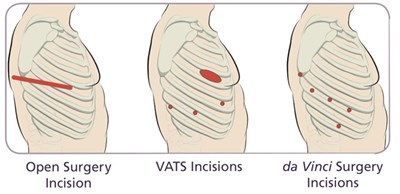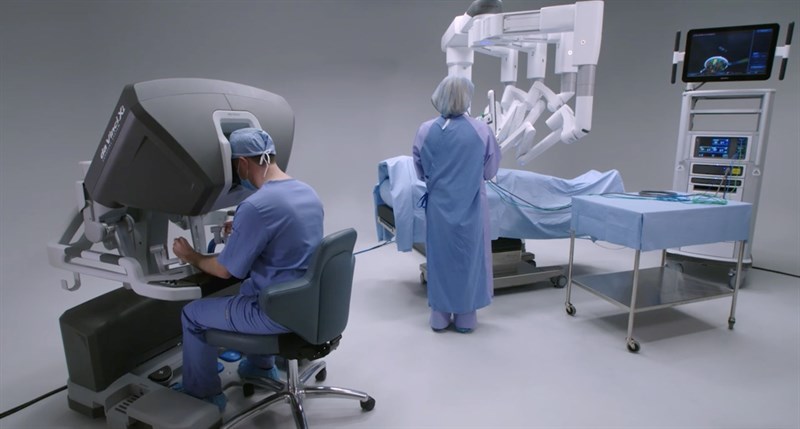High Performance Rating
UCSF Medical Center earned a “high performance” rating – the highest rating possible – for lung cancer surgery in the most recent U.S. News & World Report Best Hospitals survey.
Multidisciplinary Approach
A precise diagnosis and an individualized treatment plan are critical to success as are having experienced, highly-trained thoracic surgeons performing the procedures. Our surgeons work closely with other specialists including medical and radiation oncologists, pulmonologists, radiologists and pathologists. Multidisciplinary care is seamless and comprehensive, and treatment plans are tailored to each patient.
Minimally Invasive Thoracic Surgery
The Thoracic Surgery team at UCSF has been a pioneer in the use of minimally invasive surgery, first with video-assisted thoracoscopic surgery (VATS) and now with robotic surgery using the da Vinci® Xi Robot. Unlike the traditional open thoracotomy, which requires a large 6- to 8-inch incision, surgeons use tiny incisions to perform the operation resulting in numerous benefits for the patient including:
- Less post-operative pain
- Reduced risk of Infection
- Shorter hospital stay
- More rapid return to normal activities
- If required, adjuvant (post-surgical) chemotherapy can be administered earlier

Video-Assisted Thoracoscopic Surgery (VATS)
With VATS, the surgeons operates using several small incisions through which lighted tube, video camera called a thorascope, and special tiny surgical instruments are inserted. The camera transmits images of the operative area back to a computer monitor, guiding the surgeons as they manipulate the instruments.
Robotic Thoracic Surgery

UCSF thoracic surgeons are pioneers in the field of robotic-assisted thoracic surgery, a revolutionary advancement in minimally invasive surgery for treatment of benign and malignant tumors of the lungs, esophagus, mediastinum and chest wall. Our surgeons have special training on the da Vinci® Xi, a state-of-the-art robotic surgery system. Robotic surgery is performed in a specially designed robotic surgery suite consisting of a surgeon console with hand and foot controls controls and a 3-D HD viewer, a movable patient cart with robotic arms, and a vision cart that displays three-dimensional magnified color images. The surgical field is presented to the surgeon through the 3-D HD vision of the robot. The robot's “wristed” instruments move in tandem with the surgeon's hands providing unparalleled dexterity, precision, and control.
Expertise in Complex Cases
Thoracic surgeons at UCSF are well-known for their willingness to treat high-risk patients including those routinely turned down for surgery at other institutions. Patients given only limited options by their treating physicians often seek second opinions from our specialists. The Thoracic Surgery Program is known for its expertise in treating high-risk patients and those ruled out as surgical candidates at other institutions.
Enhanced Recovery after Surgery (ERAS)
UCSF has a special program for patients designed to enhance recovery after thoracic surgery. This includes a faster recovery, shorter hospital stay, and safer more effective pain management. Thoracic surgeons, anesthesiologists, hospitalists, and nurses use the latest evidence-based protocols to provide state-of-the-art innovative peri-operative care.
Low Operative Mortality
The UCSF Thoracic Oncology Program, a high volume referral center for Northern California and the Western U.S., performs nearly four hundred major procedures annually, more than any other program on the West Coast.
Numerous published studies have demonstrated that lung and esophageal cancer patients had fewer complications and better outcomes when having their surgery at high volume medical centers like UCSF. For non-small cell lung cancer, the most common form of the disease, overall operative mortality is UCSF less than one-percent (1%).